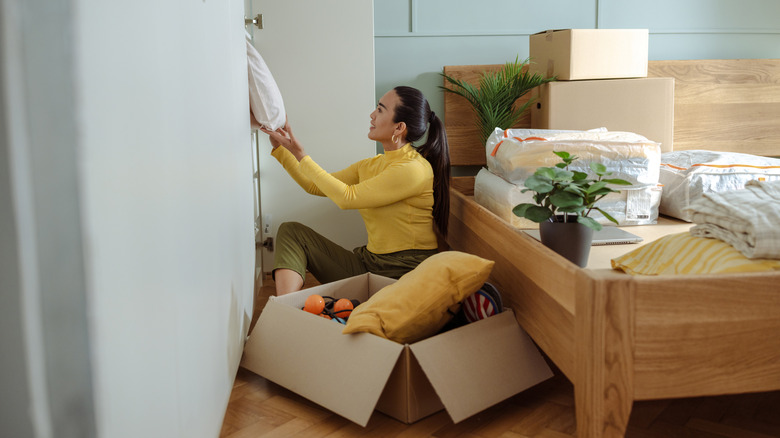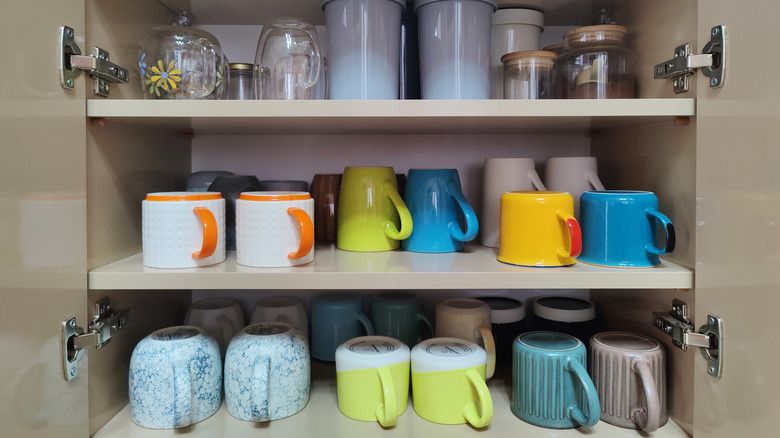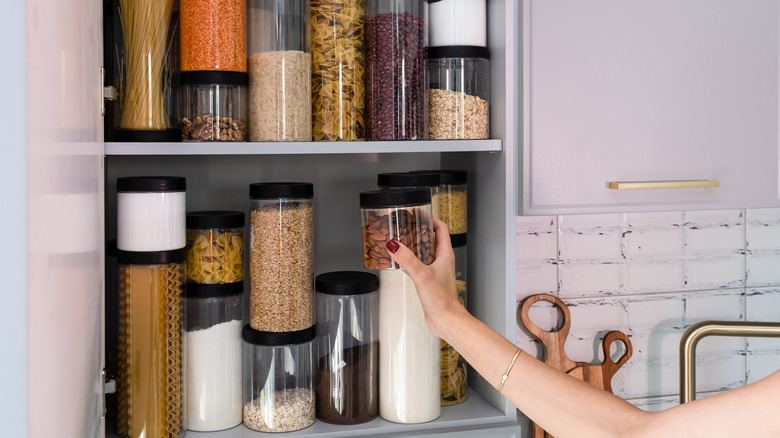The Very First Room To Declutter When Organizing Your Home
You finally make the big decision to organize your home, but then the panic sets in: Where do you actually start? Maybe you eye the overflowing junk drawer in the hallway, or the messy bathroom cabinets that make it difficult to complete your morning routine. The size of the task — tackling an entire house — can make you feel overwhelmed before you even start. You might be tempted to jump into the most ignored spaces first, but professional organizers will tell you to skip the cluttered garage and closets and start with the place you're probably in the most: the kitchen.
This isn't just where you make meals, it's the home's command center, busy with everything from morning coffee to evening family dinner. Choosing the right strategies that work best for decluttering your home often means avoiding burnout. Starting the organizing project here gives you an immediate sense of success that you can see right away. This sense of accomplishment is the perfect boost of momentum you need to keep moving through the rest of the house. Focusing on an area where you spend a lot of time is important to turning a potentially overwhelming project into a streak of small wins.
Professional advice on where to begin in the kitchen
The first thing organizing experts recommend is to stop and plan. Before you start pulling everything out, take a moment to look at your kitchen and find out where it has the most clutter. This allows you to tackle the work in smaller, more manageable chunks. Professional organizers suggest starting with the easiest items first to build momentum and confidence. Begin by going through the pantry and refrigerator and get rid of any expired food, condiments, or spices. This frees up shelf space with minimal effort. Next, keep counters clutter-free. Remove everything that doesn't belong or isn't used daily, since keeping them clear reduces visual clutter, which some studies suggest can help with focus.
Instead of emptying an entire cabinet, you should take on items by specific category. Start with things like water bottles, food storage containers, or mugs, since many people have too many duplicates of these items. Sorting by category helps you to see exactly how many items you own, making it easier to decide what to keep. When you move into the deeper organizing, professional methods include the rule of taking everything out of one area at a time. This lets you clean out the space and assess exactly what you have before you put only the items you need back in their designated spots.
Helpful organization tips for the kitchen
Tips for a perfectly organized kitchen focus on creating a sustainable system, not just a one-time clean-up. Once you have pared down your kitchen items, you can start a system to keep everything organized by grouping items by function, a concept also called creating "zones." Professional kitchens use zoning, and you can, too, by storing items where you use them. For instance, you should keep pots, pans, and cooking utensils near the stove in a cooking zone; place cutting boards, knives, and mixing bowls in a prep zone; and keep cleaning products under the sink for a cleaning zone. To make the best use of space, especially in cabinets and pantries, you should utilize vertical space. You can do this by using stackable containers, shelf risers, or vertical dividers for cutting boards and baking sheets. This keeps items visible and easy to access.
Another strategy is to contain the chaos. Use bins, baskets, or clear acrylic containers to hold similar items. This helps group smaller things, like spice packets or cleaning supplies under the sink, and keeps them from getting lost in the back of the cabinet. For dry goods like flour and sugar, putting them in clear, airtight containers keeps them fresh and makes inventory easy. To help your newly organized space stay organized, adopt the habit of practicing "one in, one out." This means that whenever you bring a new item into the kitchen (like a new mug or gadget), an older one needs to leave. Finally, a simple but really effective way to stay organized is to label everything. Labels let everyone in the house know exactly where to find something, and most importantly, where to return it during cleanup.


